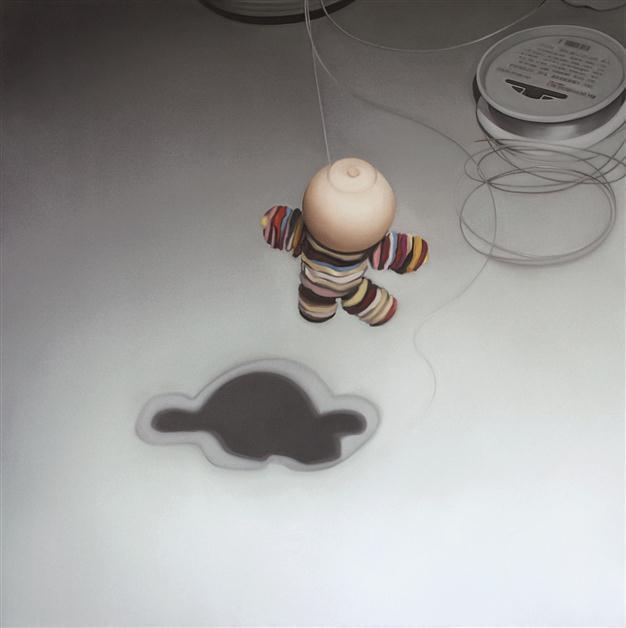Artist reflects pain and the reality of social life
ISTANBUL - Hürriyet Daily News

Artist Leyla Gediz also drew portraits of her friends. This is a different style on coping with the relations, according to Gediz. While doing these paintings Gediz tried to share her own concerns and her pain, which she had experinced in the past with the audience. Gediz is in the pursuit of spiritual paintings.
Leyla Gediz is an artist who is in pursuit of spirituality in her paintings. Art, according to Gediz, has to have a part that uplifts and heals the audience.
In her solo exhibition “Coming Soon” at Rampa Art Gallery, which can be viewed through Jan. 14, 2012, Gediz does this very professionally and sincerely. The exhibition brings together Gediz’s new works that have not been exhibited before.
“I started to draw those paintings first to question myself,” Gediz said. Her later works reflected a personal history, which became universal, according to Gediz.
Gediz said that while doing so, she tried to be transparent and reflect herself on the canvases.
“For example, I have drawn the portraits of my own friends. This was the thing I did to cope with my own social life,” she said.
That is why this exhibition has an exclusive place for Gediz. “In all of my exhibitions I reflected my personal experiences. However, in the former ones the personal experiences stayed more hidden. In this exhibition it is more evident,” she said, adding that she tried to reflect the notions that hurt her the most.
What Gediz serves to the audience is a tackling psychological, social and developmental question, which leaves the audience alone with their feelings. The exhibition draws attention to whether it is possible to have or to be a family.
While Gediz’s works were instigated by processes of attachment and remembering with a conceptual approach, the artist constructs the exhibition over the impossible representation of happy family life. While doing this, Gediz suggests the audience feel the pressure of society in such issues. Gediz creates her paintings to reflect consummation as imposed by the celebration of culture and future anxiety inherent in the social construct of family. These issues, according to Gediz, bear traces of the personal transformation. Gediz herself also confessed that she undergoes a generational rupture.
“While doing these paintings I tried to share my concerns and my pain with the audience. This may be seen in the ‘Kodak’ series, which reflects the aspect of being a ‘happy’ family and the pressure society places on this issue.”
“Coming Soon,” which the artist produced in response to her own generation’s haste and fluster to build a future and be adults, corresponds to more than the sum of its story’s parts; it corresponds to common denominators that connect us to each other and define our relationship with life. In her words, the artist is asking “What does the future promise us today?”
However, said Gediz, something that should not be forgotten is all of these things that Gediz used are the concepts; the real thing is the paintings.
“It is a fact that these issues and concepts are really important in life that everyone forgot these are paintings and focused on the concepts,” Gediz said.
Gediz questions her own social map in the preparatory process of the “Coming Soon” exhibition and uses the white lies of everyday communication, other commitments presented as obstacles to meetings and future promises as typographic images in her drawings titled “We Almost Met.”
Devising a performative working ground for another one of her series, the artist makes portraits of friends she sees only occasionally. Renowned for her contemporary approach to the tradition of the portrait from her earlier work such as “Atlantis 2000” (2001) or “Portre/Portrait” (2002), this time Gediz situates the reflexive relationship between herself and the young women she positions as models as the initial phase of an open-ended research process. In accordance with the nature of working with a model, the project derives from the organic and reciprocal relationship between the artist’s subject and the content subject, shaping each other in the process.
Among the paintings outside the series, in line with the artist’s autobiographical approach, “No me mientas” (Spanish phrase meaning “Don’t lie to me”), which has a dolphin bath toy at its center, and “Paraphernalia” (Latin word for the personal belongings of a person, especially a woman), which depicts a white flower figure composed of fish scales, are the most recent products of the artist’s obsessive relationship with objects.
